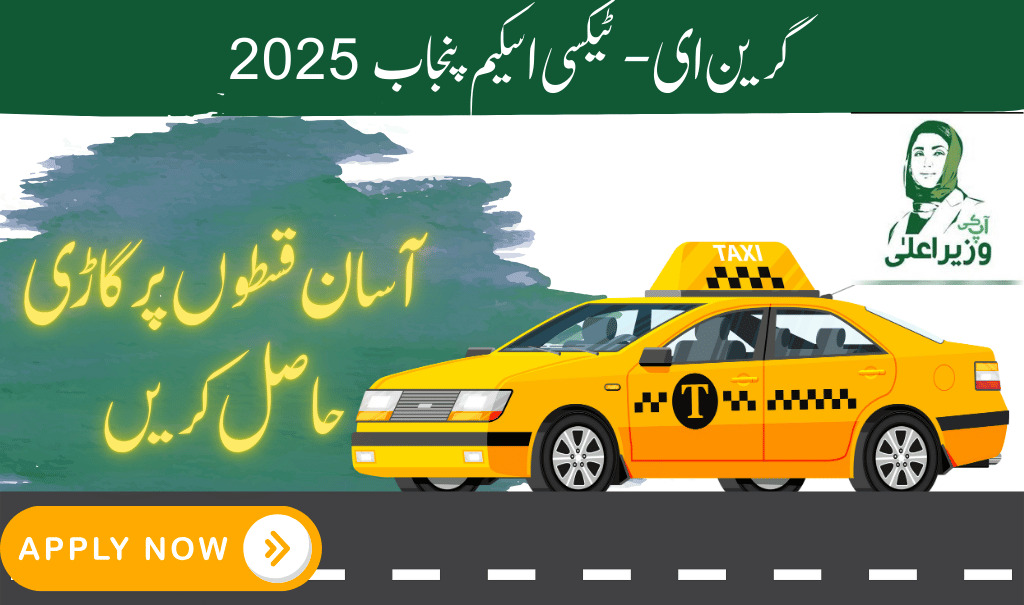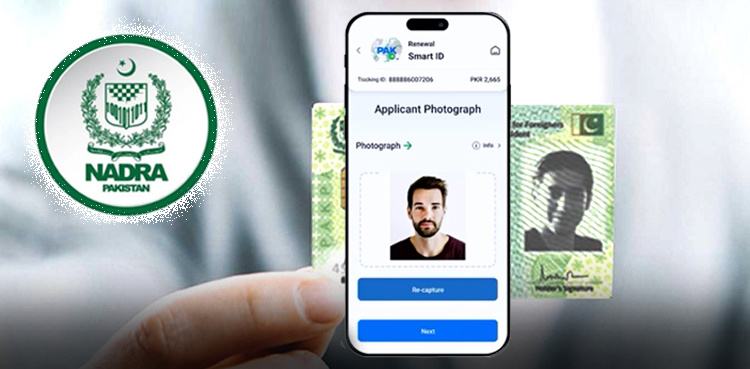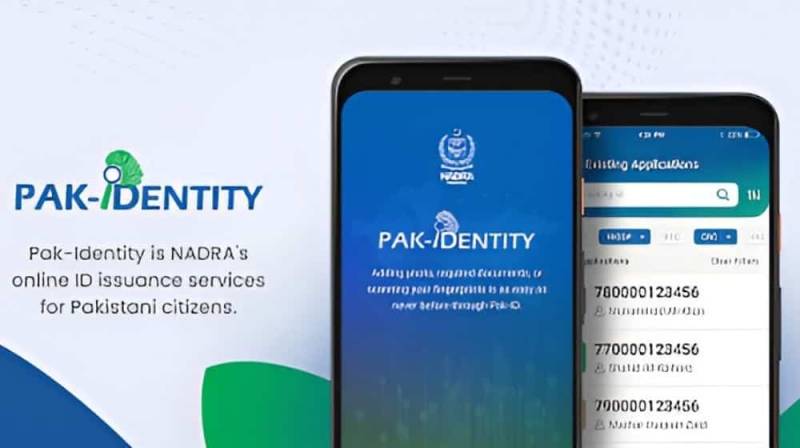Automobile
Punjab E-Taxi Scheme 2025: Everything You Need to Know
Published
4 months agoon

The Punjab E-Taxi Scheme 2025 is an unprecedented initiative launched by the Government of Punjab, aiming to revolutionize mobility, create jobs, and accelerate the province’s transition toward green transport. At a time when urban air pollution and youth unemployment remain urgent challenges, the scheme stands as a model for innovation, inclusion, and sustainability.
The Vision Behind Punjab E-Taxi Scheme 2025
For years, Punjab’s metropolitan centers like Lahore, Faisalabad, Rawalpindi, and Multan have grappled with both rising air pollution and employment instability. The Punjab E-Taxi Scheme 2025, under Chief Minister Maryam Nawaz’s leadership, responds to these concerns by providing interest-free electric and hybrid taxis to eligible drivers, democratizing vehicle ownership, and reducing carbon emissions in one stroke.
The government’s dual objectives are clear: to create accessible income opportunities for youth and underserved populations, and to rapidly phase out older, polluting vehicles with zero-emission alternatives. In its first phase, the scheme will distribute 1,100 modern, tech-enabled taxis, each equipped with GPS navigation and smart fare meters.
Why Punjab’s E-Taxi Scheme Matters
Punjab’s transport ecosystem has historically depended on outdated fossil-fuel vehicles, congested public routes, and informal labor. By transitioning to green transport and formalizing micro-entrepreneurship through e-taxis, the scheme is:
- Empowering the unemployed and self-employed youth with a reliable means to earn daily income.
- Lowering operational costs for drivers, via subsidized vehicle prices and affordable, interest-free installment plans.
- Promoting gender and social inclusion, with special vehicle allocations for women, differently-abled individuals, and residents of rural communities.
- Modernizing public transport, introducing GPS, smart meters and digital branding for safety and fare transparency.
- Protecting the environment, by replacing old petrol and diesel taxis with battery-powered EVs and hybrid vehicles that drastically reduce air and noise pollution.
For a deeper look at the government’s comprehensive approach, see this well-organized overview of the CM Punjab E-Taxi Scheme which breaks down benefits, application specifics, and eligibility in one place.
Who Is Eligible to Apply for Punjab E-Taxi Scheme?
The scheme is designed to benefit a broad cross-section of Punjab’s population. The main eligibility requirements are as follows:
- Age bracket: 21 to 45 years (some sources mention up to 55, based on rollout phases).
- Residency: Only permanent residents of Punjab may apply, with priority given to those who have lived in the province for several years.
- Driving Licence: Valid CNIC and LTV (Light Transport Vehicle) driving licence required.
- Banking Status: Must not be a defaulter of any bank; clean financial record required.
- Inclusivity: Applications encouraged from men, women, differently-abled, and low- to middle-income applicants.
- Documentation: Applicants must upload CNIC, Punjab domicile/utility bill, LTV licence, bank account info, and photograph through the portal.
Step-by-Step Application Process
The scheme’s digital-first approach ensures an accessible and transparent application system:
- Online Registration via Official Portal: All applications begin at the Punjab Information Technology Board’s web portal, where candidates create accounts using CNIC and mobile numbers and verify via OTP.
- Document Upload: Submit required documents (CNIC, residence proof, license, photo, bank details) for initial review.
- Vehicle Selection: Pick city of operation and choose between available electric or hybrid taxis.
- Approval Process: Verification by government and banking partners, including due diligence checks on credit background.
- Agreement Signing: Accepted applicants finalize agreements and payment plans, taking possession of their vehicle as per the distribution schedule.
Online applications are projected to begin in September 2025, with balloting and vehicle distribution by December 2025.
Vehicle Features and Technology
The initial fleet includes industry-leading electric vehicles such as Honri Ve 2.0 and GuGo Box, showcased at the Punjab Transport Expo 2025. Vehicle features:
- Range: Each electric taxi claims a range of 250–300 km per charge.
- GPS and Smart Fare Meter: Ensures real-time tracking and accurate fare computation for passengers.youtube
- Branding: Vehicles are outfitted with distinctive e-taxi stickers and digital identification.
- Zero-Emission Operation: Electric taxis are silent, clean, and eliminate tailpipe emissions, directly improving urban air quality.
To support this rollout, dedicated charging stations are planned every 3 km in major cities, starting with Lahore and expanding province-wide.
Financing Model: Down Payment, Installments, and Subsidy
The Punjab E-Taxi Scheme’s financial package is designed to maximize accessibility and minimize owner risk:
- Vehicle Cost: Estimated at Rs. 6.5 million (Rs. 65 lakh).
- Down Payment: About 30% (Rs. 1.8–2.0 million) must be paid upfront.
- Interest-Free Installments: The remainder (Rs. 4.5–4.7 million) covered by bank partners with zero interest, and monthly payments of ~Rs. 60,000.
- Government Subsidy: For select applicants, up to 30% of the cost can be covered by the government subsidy.
- Flexible Repayment: Agreements are structured to minimize risk; collateral requirements are often reduced for approved drivers.
Special Provisions for Women and Marginalized Groups
The scheme puts special emphasis on inclusion:
- Women-Only Allocation: At least 30 vehicles in the initial phase reserved for women; similar incentives for the differently-abled and rural applicants.
- Safety Features: GPS tracking and operator branding improve security, and are particularly beneficial for women and new drivers.
- Economic Uplift: Women’s participation supports broader family income and community development.
Electric or Hybrid? Making the Right Choice
Drivers can opt for either electric or hybrid taxis, depending on their operational area and charging facilities.
| Feature | Electric Taxi (EV) | Hybrid Taxi |
|---|---|---|
| Running Cost | Lowest | Moderate |
| Maintenance | Lowest | Moderate |
| Emissions | None | Low |
| Best For | Urban trips | Longer suburban routes |
As the infrastructure expands, electric taxis will become even more viable across Punjab’s urban landscape.
Legal Prerequisite: Vehicle Document Verification Before Ownership
An essential legal step for every applicant and vehicle buyer in Punjab is verifying vehicle documentation before finalizing ownership. This prevents fraud and ensures the legitimacy of every transaction—a critical concern for anyone joining the taxi trade.
Applicants considering taxi purchase or transfer under the E-Taxi scheme should consult the official MTMIS Punjab system. This online platform, provided by the Punjab Excise and Taxation Department, enables instant verification of registration status, tax details, and ownership records from anywhere. For a clear, step-by-step walkthrough of the process, see this comprehensive guide on how to verify vehicle documents through MTMIS Punjab. Here, you’ll learn how to avoid common pitfalls and ensure your taxi’s legal authenticity before starting your new career.
Socioeconomic and Environmental Impact
Economic Opportunities
- Employment Generation: Thousands of new jobs for drivers across Punjab’s cities; steady incomes for families.
- Support for Entrepreneurs: Small fleet owners welcome, expanding impact beyond individual applicants.
- Financial Inclusion: Access to banking and credit for the first time for many applicants.
Environmental Benefits
- Cleaner Air: Every electric taxi removes a high-emission vehicle from Punjab’s roads.
- Reduced Running Costs: Electricity is far cheaper than petrol or diesel, protecting both driver incomes and the environment.
- Noise Reduction: Quiet operation enhances city life.
Social Transformation
- Women’s Empowerment: Dedicated vehicles and safe design features for female entrepreneurs.
- Inclusive Growth: Marginalized communities and differently-abled persons benefit from dedicated allocations.
- Urban Mobility Upgrade: Modern technology upgrades urban transport standards.
Addressing Infrastructure and Operational Challenges
The grand vision for Punjab’s E-Taxi Scheme faces predictable challenges:
- Infrastructure Scale-Up: Charging station network must grow fast to match fleet demands.
- Public Awareness: Widespread information campaigns are needed to educate applicants and drivers.
- High Demand: With more than 60,000 applicants for 1,100 vehicles in phase one, transparent verification and balloting are critical for trust and fairness.
The Future: Expansion and Sustainable Development
Punjab’s E-Taxi Scheme 2025 is about more than just contemporary transport; it’s a launchpad for modern mobility policy. The government plans further expansion in future phases, aiming to introduce tens of thousands of clean vehicles, and to serve as a nationwide example. A commitment to digital transformation, environmentalism, and gender equity positions Punjab as a leader in South Asia’s green mobility revolution.
Conclusion
The Punjab E-Taxi Scheme 2025 is a landmark intervention in Pakistan’s pursuit of sustainable, inclusive economic growth. It simultaneously addresses unemployment, urban congestion, air pollution, and gender disparity, representing the first major government-led attempt to reform the province’s transport sector after decades of inertia. By learning from international successes, leveraging digital tools, and making serious commitments to environment, equity, and technology, Punjab stands ready to serve as a model for progressive public policy.
For eligible applicants—urban and rural youth, women, people with disabilities, and entrepreneurs—the time to prepare for online registration is now. As Punjab accelerates toward a cleaner, greener, more prosperous future, the E-Taxi Scheme 2025 is both the roadmap and the vehicle for change.
You may like
- How to Choose the Right University in Pakistan
- How to Apply for University Admission in Pakistan (Step-by-Step)
- How to Renew CNIC through NADRA Online Portal (Complete Guide 2025)
- What Is CNIC and Why It Is Important in Pakistan? Complete Guide (2025)
- How to Apply for CNIC Online in Pakistan (Step-by-Step Guide)





